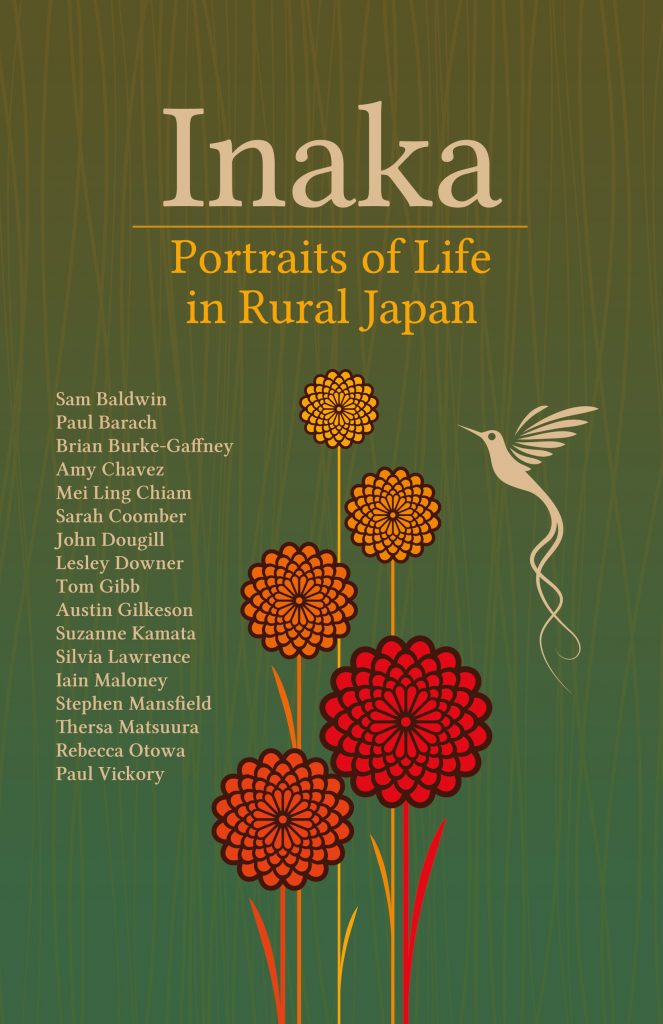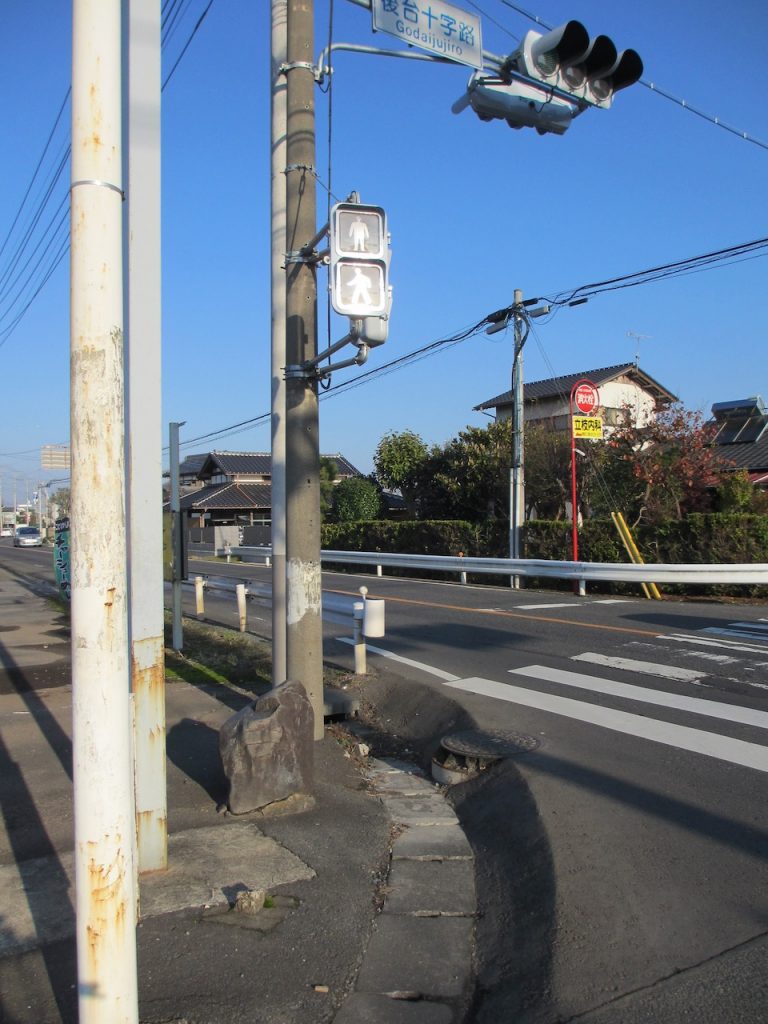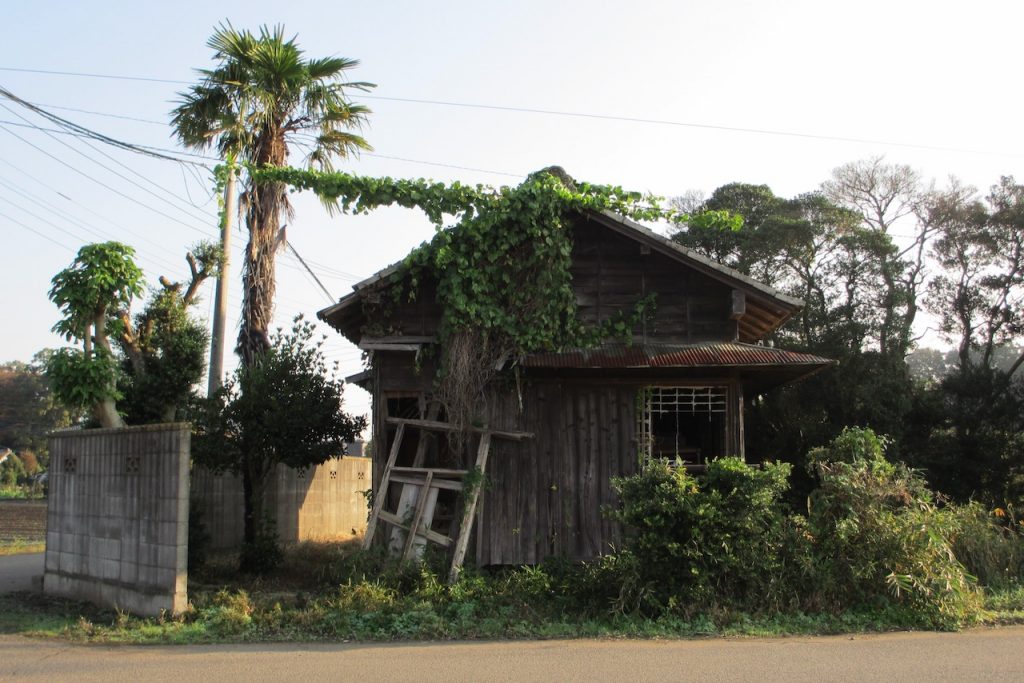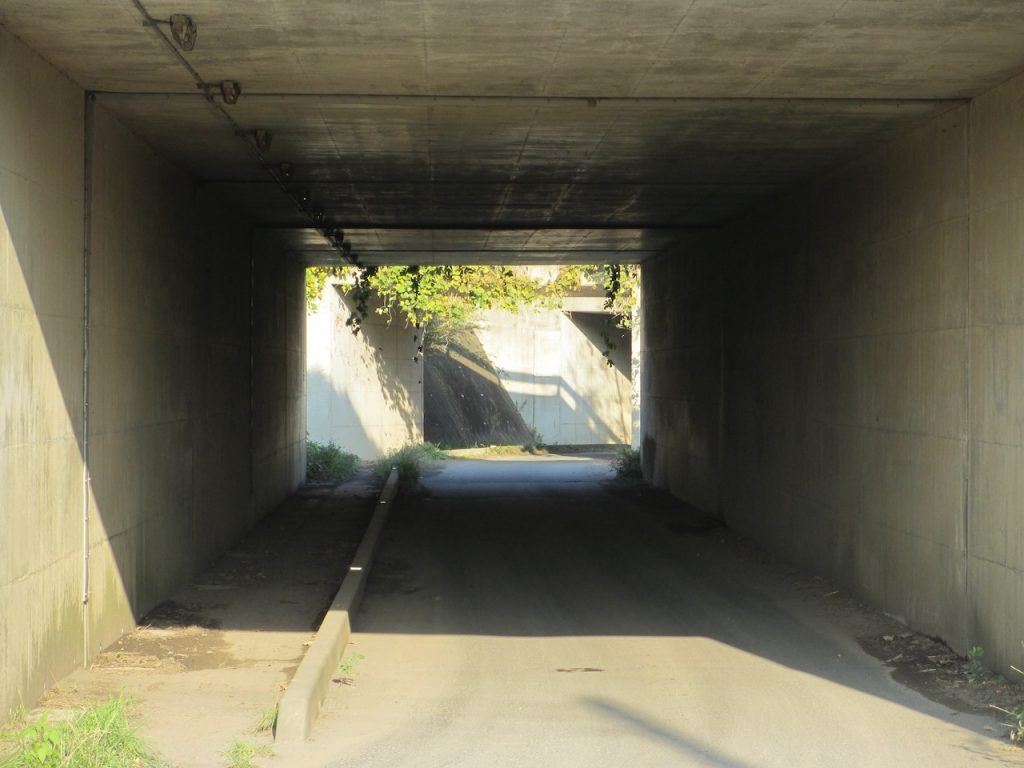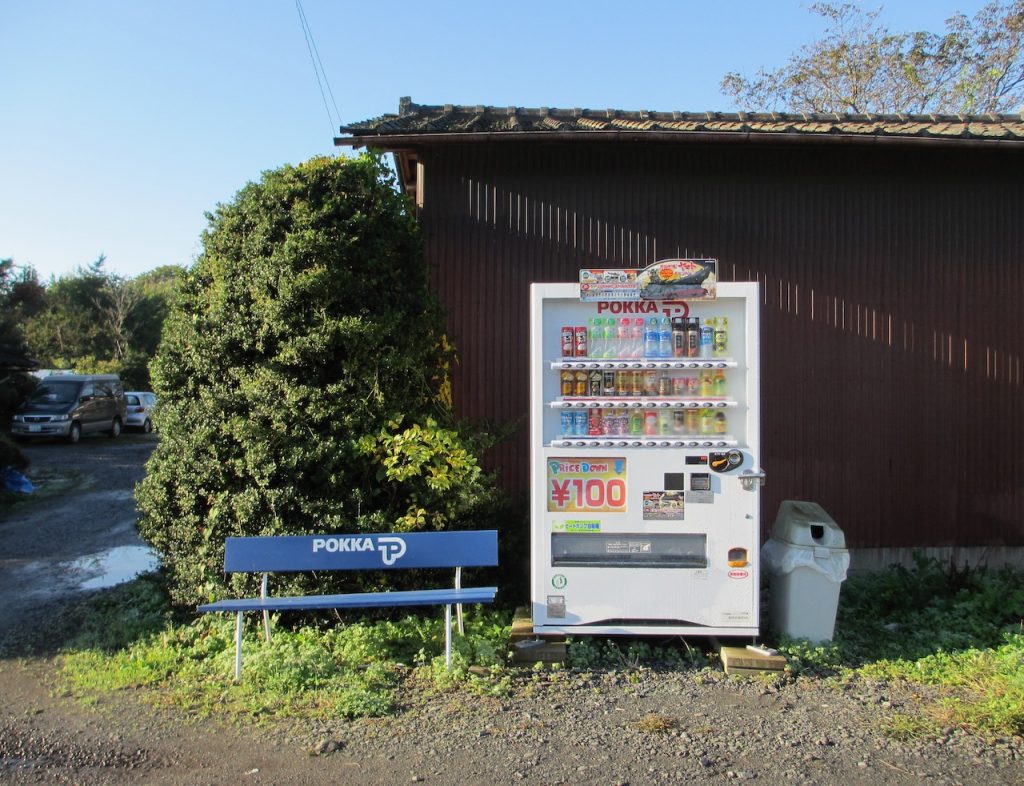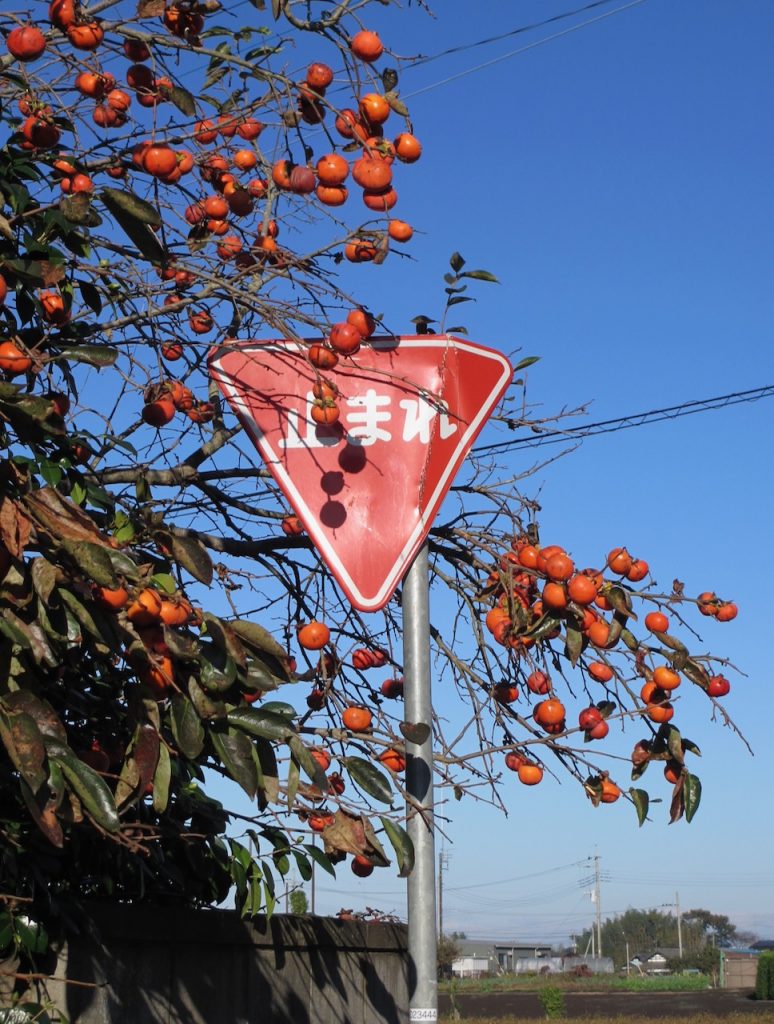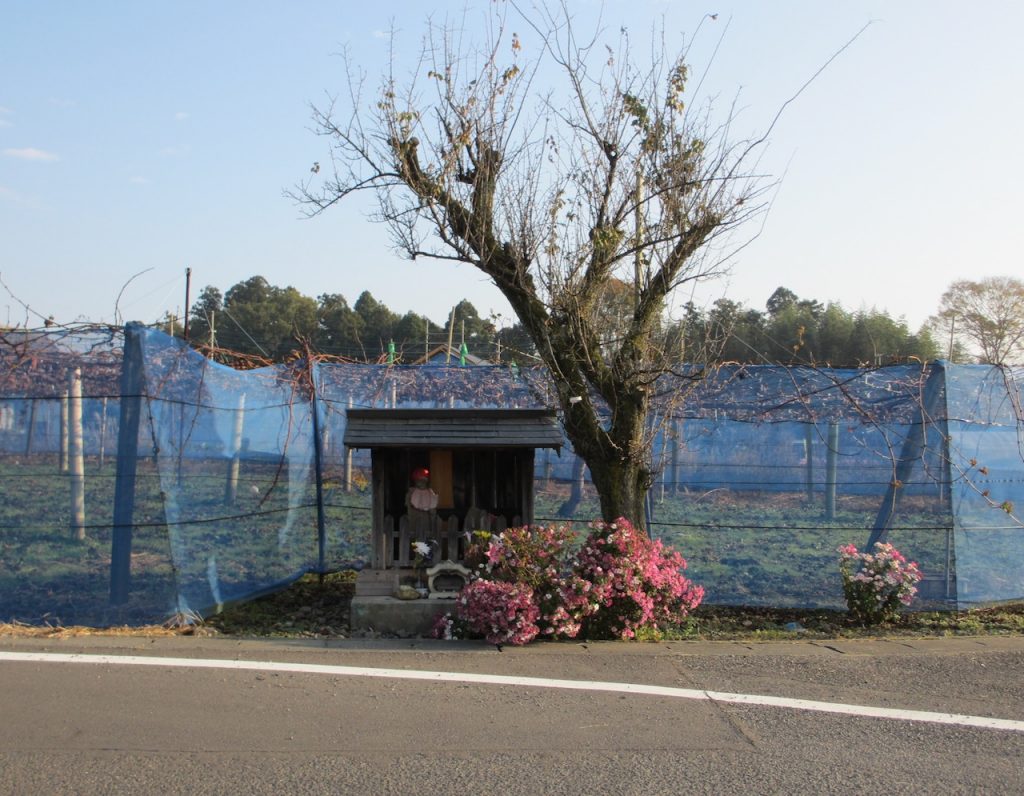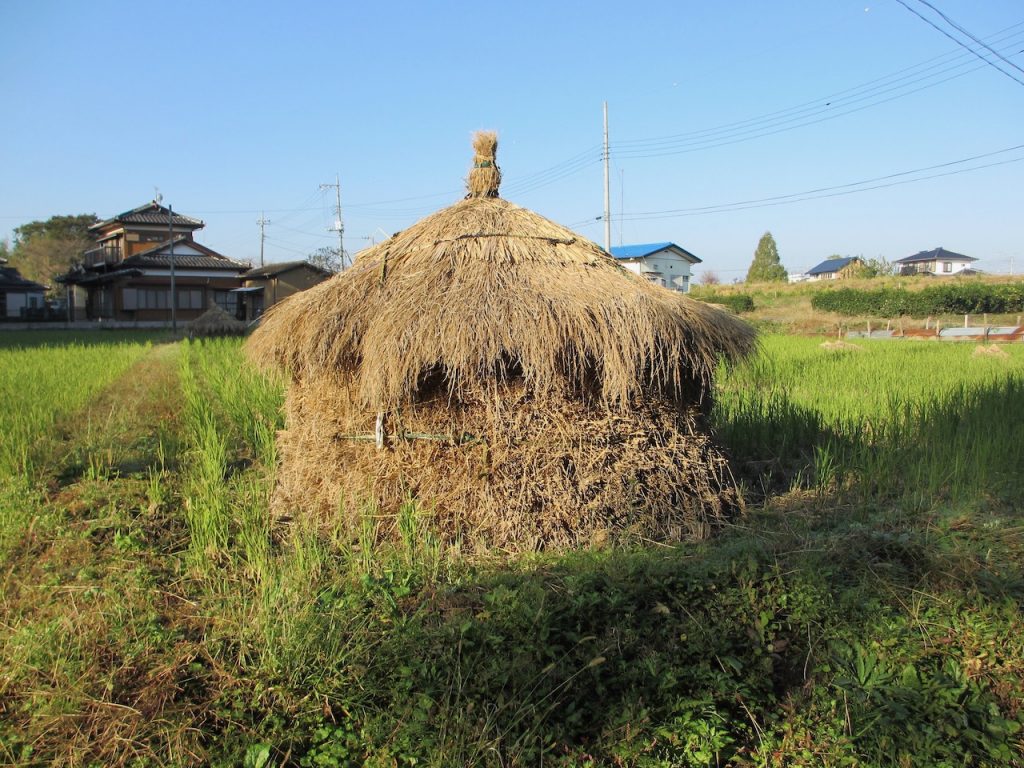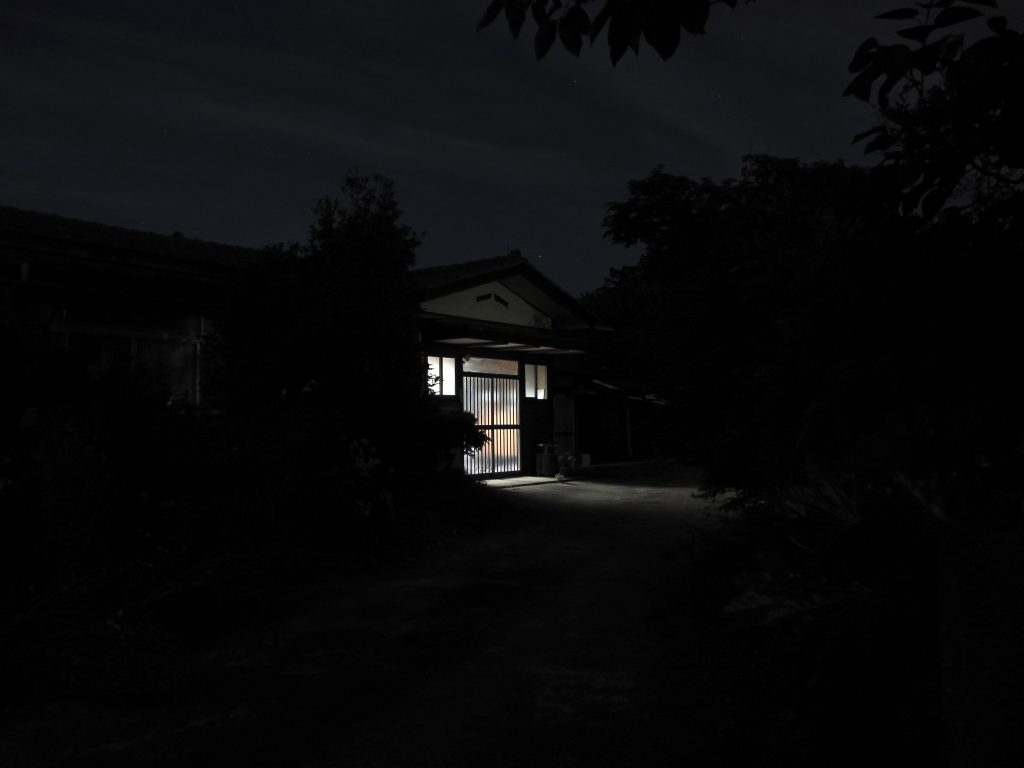This was originally written as a guest post for my good friend James at ALT Insider, and is re-posted here with his permission.
Particularly
when you’ve just become an ALT, being thrust with only the bare minimum of
training into a Japanese state school can be thoroughly disorientating. You
won’t be informed of many things in advance, so the purpose of this post is to
tell you what is likely to take place during the course of a typical school
year, what to do when it does, which events are worthy of further investigation,
and which are frankly tedious and to be avoided at all costs.
Along
the way you may also find out how to earn some brownie points with your
superiors, stay one step ahead of your teaching colleagues, and perhaps most
important of all, know when you’re most likely to be able to relax in the staff
room and watch cat videos.
In other words – and to paraphrase the ALT Insider Mission Statement™ – I want to help you enjoy your time as an ALT and your time in Japan.
The Basics
First off, a few things about junior high school life which may be relevant to the information that follows
1. Schedule
Most of
you will receive a schedule detailing which lessons you are to teach with your
JTE, but this schedule is subject to change, often at the last minute.
The
first thing that’s worth knowing is that most schools have an A schedule and a
B schedule (A日課, B日課 / Aにっか・Bにっか / A-nikka, B-nikka, or sometimes 通常日課・特別日課 / つうじょうにっか・とくべつにっか / tsuujoh-nikka, tokubetsu-nikka),
the former being a normal school day of six 50-minute classes, and the latter
being one of six 45-minute classes. The B schedule can come into play for any
number of reasons, for example when there’s a special event of some sort, or
when the students go home earlier than usual.
There
will be a blackboard in the staff room on which this kind of information is
posted, along with which teachers are going on business trips (出張 / しゅっちょう / shucchoh –
it could be that one of your JTEs has a meeting or a seminar, meaning you’ll be
free and easy), and whether or not today’s schedule has been swapped for
another’s – for example, if it’s Tuesday but the blackboard says, ‘月曜日課’ (げつようびにっか / getsuyohbi-nikka),
that means you should refer to your schedule for Monday.
There will also be a blackboard or whiteboard outside the staff room for the benefit of the students, on which you should keep an eye out for timetable changes (授業変更 / じゅぎょうへんこう / jugyoh-henkoh) – for example, when one of your English classes has been swapped for a different subject.
2. Day off in lieu (振替休業日 / ふりかえきゅうぎょうじつ / furikaé-kyuh-gyoh-jitsu)
While
the workload of a typical ALT is almost ridiculously light, you will sometimes be
expected to work on a Saturday. The good news is that if you do, you’ll get the
following Monday off.
Saturday
work days typically occur on open days, sports day, the culture festival, and in
other exceptional circumstances, such as when a school trip takes place on a
weekend, and those students and teachers who aren’t involved work a Saturday so
that everyone in the school gets the Monday off.
If
you’re a dispatch company ALT, you may get both the Saturday and Monday off,
thereby leaving you with a three-day weekend. On the other hand, if you’re
direct hire and don’t go to work on the Saturday with everyone else – either by
accident or by design – you’ll probably have to take a day’s paid holiday for
the privilege.
3. Packed lunch (お弁当 / おべんとう / obentoh)
If you have to work on a Saturday, or occasionally when the students go home early on a weekday – for example after the entrance ceremony or the graduation ceremony – you won’t be served any lunch. Your options in this case are to:
i) Bring your own (either one you’ve bought on the way to school, or perhaps some magical creation you woke at 4am to conjure up, and which features the face of Doraemon rendered in nori seaweed, sausages cut into baby octopus shapes, vegetables arranged to look like the cat bus from My Neighbour Totoro etc.).
ii) Pop to the shops and buy one (although be warned, as some vice-principals may not look kindly on their ALT leaving the premises, even for such an apparently legitimate reason).
iii) Pay for one of the bento boxes the teachers will be ordering (these are usually 5 or 600 yen, but can be more expensive – for example, I once parted with the best part of 1000 yen for a handmade sushi platter delivered from a local restaurant).
Ceremonies
If there’s one thing the Japanese – and by implication, Japanese institutions such as schools, boards of education and local authorities – like more than anything else, it’s a good, old fashioned ceremony, and while some can be culturally enlightening, others are tedious to the point where you will be falling asleep on your feet as you look on, half freezing to death in the mid-winter chill of a dark and draughty gymnasium.
1. Entrance ceremony for new students (入学式 / にゅうがくしき / nyuugaku-shiki)
When I
was a lad, for my first day at a new school I simply turned up, sat down in the
designated classroom with my new homeroom teacher and classmates, and got on
with the day. Not so here in Japan, where first graders on their first day
march into the gym, as their names are announced by their new homeroom teacher and
their parents look on.
Interest rating: 3/5
When does it happen? A weekday in early April.
How long does it last? A couple of hours in the morning.
Do I have to go? Yes if you’re at school that day.
What should I wear? A suit, shirt and tie if you’re male / something similarly formal if you’re female.
2. Graduation ceremony (卒業式 / そつぎょうしき / sotsugyoh-shiki)
At the
opposite end of the academic year, this is when the students in the top grade
say goodbye to their school, their teachers and their classmates. The main part
of the ceremony involves each student in turn being called to the stage and
handed their certificate of graduation by the principal, but there will also be
speeches, songs (sung by the outgoing students to those they’ll be leaving
behind and by ongoing students to the seniors to whom they’re saying goodbye)
and tears all round – in fact, I defy even the most hard-hearted ALT not to shed
a tear or two during a graduation ceremony.
Interest rating: 5/5
When does it happen? A weekday in mid-March.
How long does it last? Most of the morning.
Do I have to go? Yes if you’re at school that day, but even if you’re not scheduled to be, you should make the effort and ask either your JTE, vice-principal or dispatch company if it’s OK to attend.
What should I wear? A suit, shirt and tie if you’re male / something similarly formal if you’re female (the female homeroom teachers, incidentally, often wear kimonos).
3. Beginning / end of term ceremonies (始業式・終業式・修了式 / しぎょうしき・しゅうぎょうしき・しゅうりょうしき / shigyohshiki, shuugyohshiki, shuuryohshiki)
Opening
and closing ceremonies are little more than formalities, and as a consequence
probably the least interesting in the school year. First of all,
representatives from each grade, and sometimes a member of the student council,
will take to the stage to talk about what they hope to achieve in the coming
term (hand in their homework on time, practice harder for their club activity, speak
English to their ALT etc.). These speeches are pretty generic, as is the one
that follows from the school principal, which is often illustrated with a
reference to a Japanese saying, a recent news event, or a historical figure.
Once the school song has been sung and the official business is over, one of
the teachers will talk to the students about what to be aware of – or beware of
– during the coming term or during the coming holiday. This may be to take care
when riding their bicycles in the snow, not talk to strangers on their smart
phones, or refrain from swimming in the nearby river / lake / storm drain.
Interest rating: 1/5
When does it happen? The first and last weekday morning of each of the three terms during the school year.
How long does it last? About an hour.
Do I have to go? Yes if you’re at school that day.
What should I wear? Some schools will require you to dress formally, while others won’t mind if you turn up in normal work clothes.
4. Introduction to club activities (部活動紹介 / ぶかつどうしょうかい / bukatsudoh-shohkai)
Until
they graduate from elementary school, Japanese children have it pretty easy
(although most of them will already be doing a couple of after-school classes
and clubs by this point – things like piano lessons, hip-hop dancing, soccer
youth teams etc.), but the larger part of their three years at middle school
will be arguably the busiest of their lives, as almost without exception, they
join a club, from thereon in practicing for a couple of hours almost every
single day of the year, usually after school and at weekends, but sometimes in
the morning before lessons begin – and that’s not even including tournaments or
practice matches. So the decision as to which club to join is important – in
some cases life-changing – and the introduction to club activities as
enlightening for a newbie ALT as it is for a fresh-faced first grader.
Essentially,
what happens is that everyone gathers in the gym, and the existing members of
each club demonstrate what they do and urge the first graders to join up. Team
sports can get fairly chaotic, as baseballs and basketballs fly around in all
directions, but martial arts such as kendo and judo are perhaps more
interesting, and even the demos for music and art clubs can be worth watching
if the existing members aren’t – as is sometimes the case – painfully shy.
Interest rating: 3/5
When does it happen? A weekday in April.
How long does it last? An hour or two in the afternoon.
Do I have to go? No.
What should I wear? Normal work clothes.
5. Rousing send-off (壮行会 / そうこうかい / sohkohkai)
If
there’s anything that could be said to be unique about the Japanese school year,
it’s the sohkohkai, a word that I have unilaterally decided to translate as
‘rousing send-off’. Sohkohkai take place in the days before big sports
tournaments (of which more later), and at first are nothing to write home
about, as the members of each club talk about how motivated they are and how
their aim is to make it to the second round / final / regional tournament etc.
For the
second part of the ceremony, however, a group of students who won’t be taking part
in the tournament in question suddenly run into the room wearing hachimaki (鉢巻 / はちまき / Japanese-style
bandanas) and white gloves, as one of their number beats time on a bass drum.
They will then line up in formation and yell words of encouragement to each
club team in turn, while at the same time performing a series of arm-waving
gestures rather like those guys you see at airports directing planes to and
from the gates. The overall effect is unmistakeably militaristic, and as I
recently discovered, sohkohkai took place during WWII before troops set off for
the frontline. It has to be said that depending on the school, some sohkohkai
are more impressive than others, but for sheer novelty value, I would recommend
that you witness one for yourself.
Interest rating: 4/5
When does it happen? Usually in mid-June and mid-September.
How long does it last? An hour or so on a weekday afternoon.
Do I have to go? No.
What should I wear? Normal work clothes.
6. Welcoming ceremony for new teachers (新人式 / しんじんしき / shinjinshiki)
This
takes place before the first term has properly begun, and as such is probably the
most relaxed ceremony of all. As a rule, teachers in Japan work at a particular
school for about six years, before being placed in their next teaching position
fairly arbitrarily by BOEs, who reshuffle their pack of staff cards at the
beginning of each school year. So during the welcoming ceremony, teachers
who’ve been allocated to work at a particular school will introduce themselves
in front of their new colleagues, and perhaps more importantly, the students
will learn who is to be their homeroom teacher for the year, and who will take
charge of their club activities (usually a coach and deputy coach for each).
Because classes haven’t yet begun, the chances are you may not be at school for
this, but if you are, you’ll probably be expected to line up at the front of
the gym with the other teachers and introduce yourself.
Interest rating: 2/5
When does it happen? A weekday in early April.
How long does it last? An hour or so in the morning.
Do I have to go? Yes if you’re at school that day.
What should I wear? Normal work clothes.
7. Ceremony for departing teachers (辞任式・辞令式・離任式 / じにんしき・じれいしき・りにんしき / ji-ninshiki, ji-reishiki, ri-ninshiki)
I have
to admit I’ve only ever been to one of these, but it was rather nice as it was
for one of the more competent and genial English teachers I had worked with,
and who was not only leaving the school but also retiring. So the students made
speeches, sang a song and gave her a bunch of flowers and a present, all in a
very informal and spontaneous way.
Interest rating: 2/5
When does it happen? Late March or early April.
How long does it last? An hour or so on a weekday.
Do I have to go? No.
What should I wear? Normal work clothes.
One-off Events
1. Sports day (体育祭 / たいいくさい / tai-ikusai)
You
might think that sports day would be enjoyable, but I’ll be honest here and say
that it’s the event in the school calendar I dread the most. The main reason
for this is that as an ALT I have almost nothing to do from the moment I arrive
until the moment I leave, and the highlight for me is helping tidy away the
gazebos, chairs and plant pots at the end of the day. Not only that, but everyone
else is so preoccupied that they have no time to engage in conversation, and unlike
the homeroom teachers, students and their families, having no vested interest
in the results – i.e. which student will win a particular race, or which class
will win the prize for best in their grade – makes the whole thing thoroughly
anticlimactic.
There is
one event that may enable you to take an active part in proceedings, and that’s
the karibito-kyohsoh or karimono-kyohsoh (借り人競争・借り物競走 / かりびときょうそう・かりものきょうそう), a relay in which the students are directed to find ‘A person
wearing glasses’, ‘A maths teacher’, or – and this is where you come in – ‘A
person with blonde hair’ or ‘A person from abroad’ to run with. But this
respite from the relentless boredom and indifference is all too brief, as even
if you do happen to be dragged out of the crowd to run twenty or thirty metres
with one of your students, that will be the full extent of your participation,
and you’ll soon be dumped back onto the sidelines to twiddle your thumbs and
long for the whole thing to come to an end.
A side
note: while some school sports days are now held in spring or autumn to avoid
the worst of the heat and humidity, they traditionally take place at the
beginning of September. As such, and because you will be out of doors from
about eight in the morning until two or three in the afternoon, remember to
bring a hat and some sunblock.
Interest rating: 1/5
When does it happen? A Saturday in early September.
How long does it last? From approximately 8.30am till 2.30pm.
Do I have to go? If you’re a JET or direct-hire ALT, almost certainly / if you’re a dispatch company ALT, not necessarily.
What should I wear? Sports gear – for example, shorts and t-shirts are perfectly acceptable.
2. Culture festival (文化祭 / ぶんかさい), aka school festival
Besides
school trips and sports day, this is the event in the school calendar the
students look forward to the most, but much more interesting than the latter,
mainly because it incorporates as its main attraction the chorus contest (合唱コンクール / がっしょうこんくうる /
gasshoh-konkuuru).
For the
chorus contest, each class sings two songs – one they have chosen for
themselves and one that every class in their grade sings – and competes against
the other classes for first prize (in smaller schools, the classes from all
three grades sometimes compete together). The amount of practice the students
put in is astonishing – it is not unusual for them to sing a song a hundred
times or more in the weeks leading up to the culture festival – and on the day,
their performances can be technically brilliant and genuinely moving, not to
mention team-orientated, as even the students who either can’t sing or don’t
want to have to find their place in the mix.
The
sense of relief when it’s all over is palpable, and after lunch, both students
and teachers put on a stage show (舞台発表 / ぶたいはっぴょう / butai-happ-yoh), which features dancing, videos, speeches,
comedy, quizzes, and more often than not, at least one or two male teachers and
students dressing up in women’s clothing.
Interest rating: 4/5
When does it happen? A Saturday in mid-October.
How long does it last? From approximately 8.30am till 4pm.
Do I have to go? If you’re a JET or direct-hire ALT, almost certainly / if you’re a dispatch company ALT, not necessarily, although like the graduation ceremony, this is one of those events that it’s worth giving up some of your free time to attend, if only for the morning.
What should I wear? A suit and tie / formal clothes in the morning, but I’ve found that it’s OK to dress down a little in the afternoon.
3. School trip (修学旅行・校外学習・宿泊学習 / shuugaku-ryokoh, kohgai-gakushuu, shukuhaku-gakushuu)
It is a
law decreed since the beginning of time that every third grade middle school
student in the entire country shall go to Kyoto on a school trip, and while as
an ALT you will not be invited along, what this means is that for three days in
late spring there will be no third grade classes to teach, and afterwards you
will have to help the students with their homework (more often than not, their challenge
for the trip is to grab a foreigner, ask them some questions in English, take
their photo and then write about the experience).
The
first and second graders will also go on trips, sometimes for the day to a zoo
or an aquarium, and sometimes for two or three days to a ski resort – or if they’re
really lucky, a theme park – and these, too, will give you ample time to ‘make
teaching materials’ in the staff room.
When does it happen? Usually in late spring / early summer.
How long does it last? Three days.
Do I have to go? Sadly you can’t, but since you’re a foreigner in Japan, you’ve already been to Kyoto, right?
4. Sports tournaments
There
are two main sports tournaments during the school year. The first is referred
to as ‘sohtai’ (総体 / そうたい), which roughly translates as ‘general tournament’, and can feature
club members from all three grades. By the time the second comes around –
‘shinjinsen’ (新人戦 / しんじんせん / literally, ‘new people battle’) – the third graders have quit
their clubs to concentrate on studying for high school entrance exams (of which
more later), leaving newer members (hence the name) with the responsibility of
representing their schools.
Basically,
this is another opportunity to sit at your desk and surf YouTube. Also, because
so many students will be absent during these tournaments, there are often
plenty of school lunch leftovers to be had, so now is your chance to scoff two
bags of ramen noodles, three tubs of natto, or sixteen kinako-agé-pan, while
not having to feel guilty that you may be depriving the students of their fair
share.
Particularly
if you work at a school with a strong sporting tradition, the various teams
will then progress from the initial local tournament (地区大会 / ちくたいかい /
chiku-taikai) through the regional one (中央地区大会 / ちゅうおうちくたいかい / chuu-oh chiku-taikai) to the prefectural (県大会 / けんたいかい / kentaikai),
and so on and so forth, until if they’re particularly good they make it all the
way to the national tournament (全国大会 / ぜんこくたいかい / zenkoku-taikai), all of which leads to further lessons being
cancelled due to a lack of students, and further opportunities for you to check
Facebook or, er, write guest articles for ALT Insider.
When does it happen? General tournament – mid-June onwards / tournament for new members – late September onwards.
How long does it last? Two or three days / longer if teams progress to the next stages.
Do I have to go? Partly for insurance purposes you’re unlikely to be able to, although I have known ALTs who have been given a ride by one of the teachers to baseball / tennis matches etc.
5. High school entrance exams (入試 / にゅうし / nyuushi)
These
aren’t an event as such, but I’m including them here because enabling your
students to pass them is your ultimate goal as an ALT. Depressing as it may
sound, the most important thing to remember about the English part of an
entrance exam is that it involves reading, writing and listening, but no
speaking. Plans are afoot to have a speaking element in university entrance
exams, with a view, one assumes, to eventually doing the same for the high
school version. Also, at the schools where I work, for the past couple of years
the second graders have sat a speaking test that involves each student having
their voice recorded onto an iPad-style tablet and then computer analysed
(you’ll be interested to know that I sat this test masquerading as a student
and didn’t get 100%). But the simple fact remains that whether we like it or
not, and no matter how many speaking activities we have the students do in our
classes, ultimately those same students can get a place at, say, Tokyo
University (the Japanese equivalent of Harvard or Oxbridge), with full marks in
the English section, but without even being able to utter the immortal words, ‘I’m
fine, thank you, and you?’
But
anyway, one of your tasks as an ALT is to familiarise yourself with entrance
exams: the easier multiple choice questions, the more difficult reading and
writing sections, the listening test recordings, and so on (if you can, ask
your JTE to show you some past papers – the reading comprehension passages are
particularly enlightening, in that they can be very long and often make no
sense at all). That way, from the very first time you teach a new first grade
class in early April, you’ll be aware of what they need to know to achieve
their ultimate goal of getting into high school.
Another
important thing to note is that there are two kinds of high school, public (公立 / こうりつ / kohritsu, aka 都立 / 県立 / 道立 / 府立 etc.) and private
(私立 / しりつ / shiritsu). The test for public (i.e. state-run) schools is the
same for everyone in a particular area, and depending on a student’s score,
they will either get into a prestigious high school for brainy kids, or a not-so-prestigious
high school for not-so-brainy kids. When it comes to private high schools,
however, each makes its own test, with the more prestigious ones setting tougher
questions and vice versa.
The
public high school entrance exam takes place in early March, and depending on
where you are, the results may not be announced until after the graduation
ceremony. The private exams, on the other hand, take place in mid-January, with
the results announced not long after, so that some third graders already know
what high school they will enter by mid-February, and as a consequence can quit
studying altogether (the dilemma for parents, though, is that a private high
school will cost a lot more to send their child to).
6. Home visits (家庭訪問 / かていほうもん / katei-hohmon)
Another
memory from my childhood is what’s known in the UK as the parents’ evening, for
which mums and dads go to their child’s school once a year to talk with
homeroom and / or subject teachers. In Japan, though, instead of parents going
to school, every first grade homeroom teacher personally visits the home of
each of their students – i.e. as many as thirty-plus households spread over the
school’s catchment area. These visits take place on weekday afternoons in April,
and what they mean for us is – yes, you guessed it – some conveniently large
chunks of free time. For the homeroom teachers, on the other hand, they mean
having to dress in decent clothes for once (as opposed to the tracksuit they
usually wear), get lost trying to locate the more hard-to-find homes on their
list, drink approximately ten cups of green tea in an afternoon, and eat just
as many rice crackers, cookies and cakes (which isn’t so bad when you come to
think of it).
7. Parent / student interviews (三者面談 / さんしゃめんだん / sansha-mendan)
As the school year progresses, your interactions with third graders will become even fewer and further between, as they finish the textbook and spend more time revising and taking tests. One sign that their time at middle school is almost over is the parent / student interview, for which – and as opposed to home visits – parents come to the school to discuss which high school(s) their child is aiming to get into. The interviews, which are most likely to happen from about November onwards, will have no direct effect on you as an ALT, but they will grant you yet another opportunity to skive off, as lessons for all grades are often cancelled for several afternoons on the trot.
8. Student exchange (交換留学 / こうかんりゅうがく / kohkan-ryuugaku)
Trips to
foreign countries – usually exchanges during which students stay in the home of
a local family – are more common in high schools, but if, like me, you happen
to work at a junior high school that has one, you should try to take as active
a role in the proceedings as possible. In my case, for a week or so every June
I act as interpreter for a group of ten students and two teachers from
Tennessee, something that involves sightseeing, time on the beach and at the
local mall, free meals, origami, calligraphy and the tea ceremony, as well as
meet-and-greets with the mayor, head of the board of education, local
councillors and so on.
The exchange is also a unique opportunity to organise some English lessons which involve your students conversing (well, attempting to converse) with genuine native speakers, so if a class like this is in the offing, make sure to suggest some fun, communicative activities in advance (this may sound like stating the obvious, but I have on more than one occasion witnessed JTEs do the usual boring, all-Japanese-all-the-time, read-and-repeat English lessons, as American students and / or teachers sit at the back of the classroom, silent and bored).
9. Student council elections (生徒総会 / せいとそうかい / seito-sohkai)
At
between twelve and fifteen years old, most of your students – bless their
little hearts – are not the best at public speaking, and nor are they likely to
turn what is essentially a political event into something fun or showbizzy, so
having attended a couple of these in my early years as an ALT, I now make a
point of avoiding them.
Interest rating: 1/5
When does it happen? At the beginning of the school year.
How long does it last? A couple of hours on a weekday afternoon.
Do I have to go? No.
What should I wear? Normal work clothes.
10. Guest lecturers (講演会 / こうえんかい / koh-enkai)
A couple
of times a year the school will invite guest lecturers to talk to the students
on various topics: for example, drug and alcohol abuse or traffic safety. It
very much depends on how charismatic – or otherwise – the lecturer is, but if
you don’t have something more important to do in the staff room, these can be
worth checking out, if only because they make for good Japanese listening practice.
I’ve seen lectures that merely involved an old guy reading from a script and clicking
through an ineptly produced Powerpoint presentation, but on the other hand, I
once attended a lecture by a woman whose son had committed suicide – not easy
listening, for sure, but a fascinating insight into an aspect of Japanese
society that isn’t normally discussed.
Interest rating: 2/5
How long does it last? An hour or two on a weekday afternoon.
Do I have to go? No.
What should I wear? Normal work clothes.
Regular events
1. Open day (授業参観 / じゅぎょうさんかん / jugyoh-sankan)
This is
another one of those times when you will (probably) be expected to go to work
on a Saturday, and then (probably) get the following Monday off. It’s also one
of the very few times in the school year that your JTE will go all-out to
create a super-duper, activity-filled English class, producing all kinds of
laminated flashcards, complicated worksheets, full-colour posters, slideshows,
and so on and so forth.
The day
itself will start off ordinarily enough, with a normal morning of four classes
and probably a bento lunch, but as the afternoon and fifth period approach,
parents, grandparents, and siblings will start to arrive, and will be standing
at the back of the classroom or milling around in the corridor when the class
begins. Once fifth period is over you can relax and quite possibly go home
early, as everyone else will disappear to take part in a PTA meeting.
As well
as one or two open days during the course of the school year, there will also
be times when bigwigs from the BOE turn up to ‘observe’ classes on a weekday,
something that’s known as a ‘planned visit’ (計画訪問 / けいかくほうもん / keikaku-hohmon). Your JTE will
probably make even more of a fuss – and put on even more of a performance – for
these, but because the bigwigs in question often visit every single class in
the school during a single fifty-minute period, what invariably happens is that
a) they appear in your classroom for approximately thirty seconds before moving
on to the next one, and b) you have no way of predicting at what point in the
class this will happen, so are doing something really tedious – like reading
and repeating from the textbook – when it does.
Interest rating: 3/5
When does it happen? A Saturday in mid-April, and sometimes again later in the school year.
How long does it last? The open class itself is only one period in the afternoon, but you’ll be expected to work the whole day.
Do I have to go? Probably, but possibly not if you’re a dispatch ALT.
What should I wear? Normal work clothes, but try to look as presentable as you can.
2. Evacuation drill (避難訓練 / ひなんくんれん / hinan-kunren)
In a
country cursed with so many natural disasters – earthquakes, tsunamis,
typhoons, landslides, flooding, avalanches etc. – the evacuation drill may well
be the most important event in the school year. If there’s a real disaster, of
course, you’ll get no warning of the need to evacuate, but for the drill you
should be informed in advance and – for example, if it’s the middle of winter –
can have some warm clothing to hand before you’re asked to run outside and line
up in the playground.
An
important note: during the Great East Japan Earthquake in 2011, a significant
number of people were washed away by the tsunami either while they were still
lined up in school playgrounds, or because they had been told they no longer
needed to line up in the school playground and could go back to their business.
As such, if you live near the coast and there’s a tsunami warning and / or a
large earthquake, regardless of what anyone around you is saying or doing, evacuate to higher ground (if possible at
least twenty or thirty metres above sea level), on foot and as quickly as you
possibly can.
Interest rating: 4/5
When does it happen? Two or three times a year, usually on a weekday afternoon.
How long does it last? 20 or 30 minutes.
Do I have to go? Yes.
What should I wear? Whatever you have on at the time (although see above).
3. Tests
The Japanese love their tests almost as much as they love their ceremonies, so there are a liberal sprinkling of these throughout the school year, most of which feed you with yet more helpings of free time (although you will sometimes be asked to mark the test papers, which can spoil the fun somewhat). The main flavours of test you should keep an eye out for are as follows:
i) Mid-term test (中間テスト / ちゅうかんてすと / chuukan-tesuto)
ii) End-of-term test (期末テスト / きまつてすと / kimatsu-tesuto)
iii) End-of-year test (学年末テスト / がくねんまつてすと / gakunenmatsu-tesuto)
iv) Academic ability test (実力テスト / じつりょくてすと / jitsuryoku-tesuto – at least in the area where I work, third graders take an academic ability test once a month, which is another reason why I hardly ever see them.)
Incidentally,
teachers will often spend an entire fifty-minute class informing the students
of their test results and analysing the answers. This is known as tesuto-kaéshi
(テスト返し / てすとかえし), and basically means another hour of downtime for you.
4. Staff meetings (職員会議 / しょくいんかいぎ / shoku-in-kaigi)
Staff
meetings are very rarely interesting even if you do think of them as Japanese
listening practice (the exception, perhaps, being if the teachers discuss problem
students or problem parents), and if you’re lucky, your JTE, principal or
vice-principal will let you go home before they start. If you’re unlucky you’ll
have to sit through the meeting until your official home time, but once that
arrives, in my opinion you’re perfectly within your rights to gather your things
together and tiptoe out of the staff room with an apologetic bow.
Interest rating: 1/5
When does it happen? Usually on the first Monday of the month at about 3 or 4pm, but this can vary.
How long does it last? Anything from ten minutes to a couple of hours.
Do I have to go? Often no, but sometimes you’ll be obliged to.
What should I wear? Normal work clothes.
5. Morning assembly (全校朝会 / ぜんこうちょうかい / zenkoh-chohkai)
If you
turn up for work in the morning to find the staff room empty apart from the
school secretary, this probably means there’s a morning assembly taking place
in the sports hall. Morning assemblies are the exception rather than the rule,
so this usually means that something unusual has happened, like someone being
involved in an accident on the way to school, or coming in joint-fifth place in
the regional fire prevention poster making contest (prize, certificate and
trophy giving, incidentally, are known as hyoh-shoh / 表彰 / ひょうしょう).
Interest rating: 1/5
When does it happen? Before classes start on a weekday morning.
How long does it last? 15 or 20 minutes.
Do I have to go? No.
What should I wear? Normal work clothes.
6. Staff parties
Several
times a year the teachers will go out together for a meal and a drink, and you
will often be invited along. You’re certainly not obliged to go, and if you do
it may cost a fair amount of money – say, 5000 yen for two or three hours of
all-you-can-eat / all-you-can-drink (食べ放題・飲み放題
/ たべほうだい・のみほうだい / tabéhohdai, nomihohdai) – but it can be a nice way of getting to
know your colleagues in a more relaxed, non-work context.
Among
other things, such occasions are referred to as enkai (宴会 / えんかい), nomikai (飲み会 / のみかい), hanseikai (反省会 / はんせいかい), if it’s the
end of the calendar year, bohnenkai (忘年会 / ぼうねんかい), or if it’s the end of the academic year, owakarékai or
sohbetsukai (お別れ会 ・送別会 / おわかれかい・そうべつかい).
Interest rating: Depending on the circumstances, anything from 1/5 to 5/5.
When does it happen? Various times of the year.
How long does it last? The initial party won’t go on very late, so from approximately 6pm till 9pm, but some or all teachers may stay out later and move on to a different venue.
Do I have to go? No.
What should I wear? Whatever you want.
Outro
So
that’s about it. In writing this post, I have assumed that what goes on in
junior high schools elsewhere in Japan is similar or even identical to what I’ve
experienced here in Ibaraki, but if your own experience differs or if you think
I’m talking a load of old rubbish, feel free to say so in the comments. In the
meantime, I hope you’re now better able to anticipate what will happen during
the school year, better prepared to make the most of your time as an ALT, and
looking forward to all of that staff room cat video leisure time you will soon
have at your disposal.
